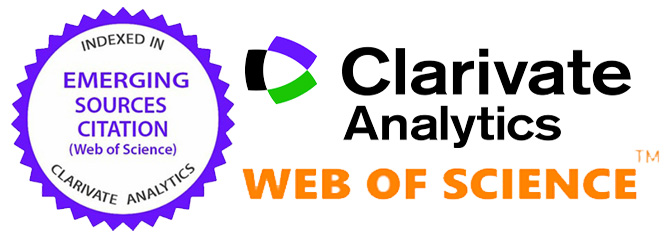Role of Self-Efficacy Toward Students’ Achievement in Mathematical Multiple Representation Ability (MMRA)
Abstract
Various studies showed that there are some points which affect students’ achievement; one of them is mathematics self-efficacy. Self-efficacy is feeling, trust, and confidence of affective behavior of students toward their ability. In learning process, the students find obstacles in solving their problem such as relating one representation to another representation. Previous studies indicated that students’ achievement of mathematical representation ability have obstacles because the students did not understand relationship between concepts, ideas, and materials to be represented. The other studies claimed that the higher students’ self-efficacy, the higher mathematical multiple representation ability (MMRA). It means that self-efficacy has positive correlation with mathematic ability. This article will discuss about role of mathematics self-efficacy toward ability achievement of mathematical multiple representation ability (MMRA) in solving mathematics problem in order to increase students’ achievement.
References
Bandura, A. (1997). Self-Efficacy: The Exercise of Control. [Online].Tersedia: http:/www.amazon.com/Self-Efficacy/Exercise.AB/fdf.[11 April 2017].
Cai, J., Lane,S., dan Jacabcsin, S.M. (1996). Assessing Student’s Mathematical Communication. Journal School Science and Mathematics. 96 (5), 238-246.
CUPM (2004). Undergraduate Programs and Courses in the Mathematical Science: CUPM Curriculum Guide 2004. USA: The Mathematical Association of America.
Dewanto, S.P. (2007). Upaya Meningkatkan Kemampuan Multipel Representasi Matematik Melalui Pembelajaran Berbasis Masalah. Disertasi. SPs UPI. Bandung: tidak diterbitkan.
Dewanto, S.P. (2008). Peranan Kemampuan Akademik Awal, Self-Efficacy, dan Variabel Nonkognitif Lain Terhadap Pencapaian Kemampuan Representasi Multipel Matematis Mahasiswa Melalui Pembelajaran Berbasis Masalah. Educationist, 2(2), 123-133.
Gagatsis, A., & Sophocleous, P. (2010). Efficacy Beliefs And Ability To Solve Volume Measurement Tasks In Different Representations. CERME. 6, 74-83.
Goldin, A. (2002). Representation in Mathematical Learning and Problem Solving. Dalam English, L. D (Ed) Handbook of International Research in Mathematics Education (pp: 197-218). Mahwah, New Jersey: Lawrence Erlbaum Associated, Inc.,
Handayani, I. (2011). Penggunaan Model Method Dalam Pembelajaran Pecahan Sebagai Upaya Meningkatkan Kemampuan Pemecahan Masalah Matematik dan Self-Efficacy Siswa Sekolah Dasar. Tesis SPs UPI: Bandung. tidak diterbitkan.
Jones, B.F. dan Knuth, R.A. (1991). What does Research Say about Mathematics? [Online].Tersedia:http://www.ncrl.org/sdrs/stwesys/2math.html.[11 April 2017]
Kaylene, P., & Rosone, T. L. (2016). Multicultural Perspective on the Motivation of Students in Teaching Physical Education. Jurnal Ilmiah Peuradeun, 4(1), 115-126.
NCTM (2000). Principles and Standards for School Mathematics. Reston, VA: NCTM
Nurfauziah, P. (2012). Peningkatan Kemampuan Koneksi Matematis dan Self-Efficacy Siswa SMP Melalui Pembelajaran Matematika Model Core. Tesis SPs UPI. Bandung: tidak diterbitkan.
Pamela, C., Villalobosl, L., & Peralta, N. (2017). Difference Cultural Structure and Behavior Students In Learning Process. Jurnal Ilmiah Peuradeun, 5(1), 15-24.
Philippou, G. & Christou, C. (2002). A study of the mathematics teaching efficacy beliefs of primary teachers. In G.C. Leder, E. Pehkonen, & G. Törner (Eds.), Beliefs: A hidden Variable in Mathematics Education? (pp. 211-231). Netherlands: Kluwer Academic Publishers.
Safrina, S., & Saminan, S. (2015). The Effect of Model Problem Based Learning (PBL). Jurnal Ilmiah Peuradeun, 3(2), 311-322.
Saifullah. (2015). The Internalization of Democratic Values into Education and Their Relevance to Islamic Education Development (Synthetic, Analytic, and Eclectic Implementation of John Dewey’s Thoughts). Advanced Science Letters, 21 (7), 2301- 2304, DOI: 10.1166/asl.2015.6257
Schunk, D. H. & Hanson, A. R. (1985). Peer Model: Influence on Children’s Self Efficacy and Achievement. Journal of Educational Psychology, 77, 313-322.
Somakim (2010). Peningkatan Kemampuan Berpikir Kritis dan Self-Efficacy Matematik Siswa Sekolah Menengah Pertama dengan Penggunaan Pendekatan Matematika Realistik. Disertasi SPs UPI. Bandung: tidak diterbitkan.
Sri, R. O (2016). Penerapan Model Pembelajaran Kooperatif Tipe Course, Review, Horay (CRH) terhadap kemampuan komunikasi matematis dan self-efficacy siswa. Tesis. PPs Universitas Pasundan. Bandung: tidak diterbitkan.
Stuart, V. (2000). Math Curse or Math Anxiety?. Teaching Children Mathematics, 6 (5), 330-335.
Sulaiman, S. (2015). Classroom Management and the Implications to Quality of Learning. Jurnal Ilmiah Peuradeun, 3(3), 431-440.
Suzanne, R., & Nathalie, L. (2016). Multiculturalism as an Alternative A Cultural Orientation to Education in the Aspect of Culture as the Axiological Focus. Jurnal Ilmiah Peuradeun, 4(3), 383-394.
Tabrani. ZA & Masbur, M. (2016). Islamic Perspectives on the Existence of Soul and Its Influence in Human Learning (A Philosophical Analysis of the Classical and Modern Learning Theories). Jurnal Edukasi: Jurnal Bimbingan Konseling, 1(2), 99-112.
Vitoria, L., & Monawati, M. (2016). Improving Students’ Problem Solving Skill in Mathematics Through Writing. Jurnal Ilmiah Peuradeun, 4(2), 231-238.
Wahyuni, S. (2012). Peningkatan Kemampuan Representasi Matematis dan Self Esteem Siswa Sekolah Menengah Pertama dengan Menggunakan Model Pembelajaran ARIAS. Tesis SPs UPI. Bandung: tidak diterbitkan.
Walidin, W., Idris, S & Tabrani. ZA. (2015). Metodologi Penelitian Kualitatif dan Grounded Theory. Banda Aceh: FTK Ar-Raniry Press

This work is licensed under a Creative Commons Attribution-ShareAlike 4.0 International License.
Authors who publish with this journal agree to the following terms: (1) Authors retain copyright and grant the journal right of first publication with the work simultaneously licensed under a Creative Commons Attribution-ShareAlike 4.0 International License (CC-BY-SA) that allows others to share the work with an acknowledgment of the work's authorship and initial publication in this journal; (2) Authors are able to enter into separate, additional contractual arrangements for the non-exclusive distribution of the journal's published version of the work (e.g., post it to an institutional repository or publish it in a book), with an acknowledgment of its initial publication in this journal; (3) Authors are permitted and encouraged to post their work online (e.g., in institutional repositories or on their website) prior to and during the submission process, as it can lead to productive exchanges, as well as earlier and greater citation of published work (See The Effect of Open Access).

























